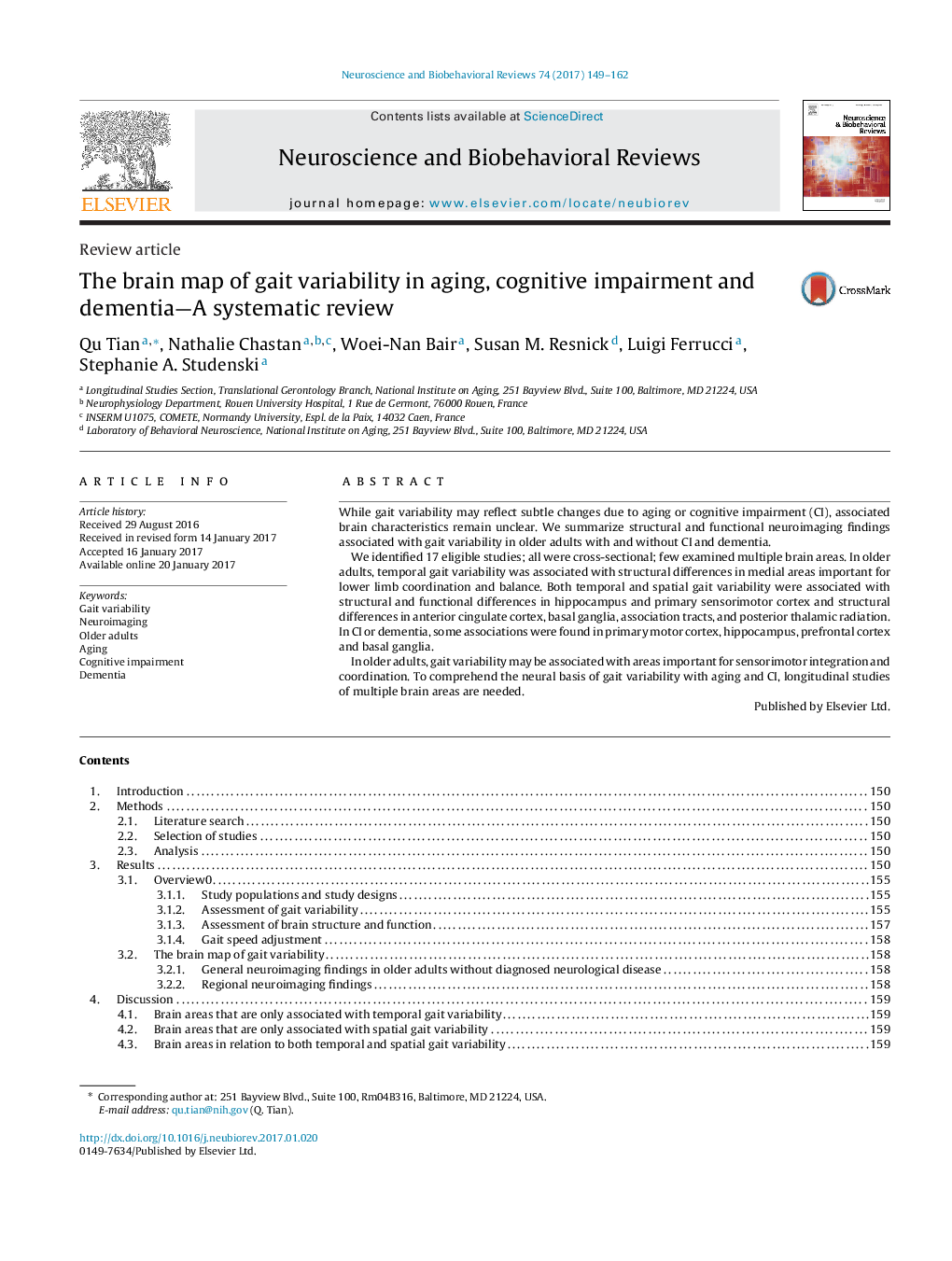| Article ID | Journal | Published Year | Pages | File Type |
|---|---|---|---|---|
| 5043704 | Neuroscience & Biobehavioral Reviews | 2017 | 14 Pages |
â¢Gait variability in aging is associated with altered brain structure and function.â¢Sensorimotor integration and coordination areas are most often altered.â¢In cognitive impairment and dementia, general and regional findings are limited.â¢Longitudinal studies of multiple brain areas are warranted to understand mechanisms.
While gait variability may reflect subtle changes due to aging or cognitive impairment (CI), associated brain characteristics remain unclear. We summarize structural and functional neuroimaging findings associated with gait variability in older adults with and without CI and dementia.We identified 17 eligible studies; all were cross-sectional; few examined multiple brain areas. In older adults, temporal gait variability was associated with structural differences in medial areas important for lower limb coordination and balance. Both temporal and spatial gait variability were associated with structural and functional differences in hippocampus and primary sensorimotor cortex and structural differences in anterior cingulate cortex, basal ganglia, association tracts, and posterior thalamic radiation. In CI or dementia, some associations were found in primary motor cortex, hippocampus, prefrontal cortex and basal ganglia.In older adults, gait variability may be associated with areas important for sensorimotor integration and coordination. To comprehend the neural basis of gait variability with aging and CI, longitudinal studies of multiple brain areas are needed.
